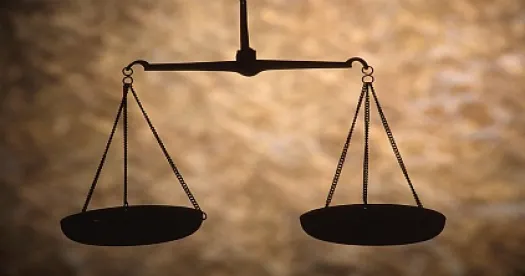Earlier today, the U.S. Supreme Court issued its much-anticipated opinion in Microsoft Corp. v. i4i L.P. The Court had granted certiorari to consider the question of whether section 282 of the Patent Act, 35 U.S.C. § 282, requires a defense of patent invalidity to be proven by clear and convincing evidence. Contrary to what many commentators were expecting, the Court left the burden of proof for invalidity defenses unchanged-defendants still must prove any invalidity defense by clear and convincing evidence.
The Court focused on early cases cited by the plaintiff/appellee, including a 1934 opinion written by Justice Benjamin N. Cardozo that stated "there is a presumption of validity, a presumption not to be overthrown except by clear and cogent evidence." Based on such decisions, the Court determined it was well understood prior to the passage of the current Patent Act in 1952 that the presumption of validity could be overcome only by clear and convincing evidence. Accordingly, when Congress enacted section 282, which set forth a presumption of validity, the Court found that Congress intended to adopt the existing burden of proof for overcoming the presumption. The Court held that "[u]nder the general rule that a common-law term comes with its common-law meaning, we cannot conclude that Congress intended to 'drop' the heightened standard proof [sic] from the presumption simply because [section] 282 fails to reiterate it expressly."
The Court did not accept Microsoft's alternative argument that the burden of proof should be different for invalidity defenses based on prior art references not considered by the U.S. Patent and Trademark Office (PTO) in granting an asserted patent. The Court did, however, recognize the "commonsense principle" that "new evidence supporting an invalidity defense may 'carry more weight' in an infringement action than evidence previously considered by the PTO. . . . Simply put, if the PTO did not have all material facts before it, its considered judgment may lose significant force." Thus, the Court noted that "a jury instruction on the effect of new evidence can, and when requested, most often should be given. When warranted, the jury may be instructed to consider that it has heard evidence that the PTO had no opportunity to evaluate before granting a patent."
Justice Breyer (joined by Justices Scalia and Alito) also filed an interesting concurrence stressing that the clear-and-convincing standard applies only to factual issues relating to invalidity defenses, and not to legal questions. "Where the ultimate question of patent validity turns on the correct answer to legal questions-what these subsidiary legal standards mean or how they apply to the facts as given-today's strict standard of proof has no application." The concurring Justices thus urged district courts to keep these issues separate "by using instructions based on case-specific circumstances that help the jury make the distinction or by using interrogatories and special verdicts to make clear which specific factual findings underlie the jury's conclusions." For years, some members of the U.S. Court of Appeals for the Federal Circuit have been urging district courts and litigants to use verdict forms and jury interrogatories that ask for more detail about the factual findings underlying decisions on issues such as obviousness, but those efforts have met with mixed results. It will be interesting to see whether these comments from three Supreme Court Justices will have any significant effect on how patent cases are actually tried.



 />i
/>i

